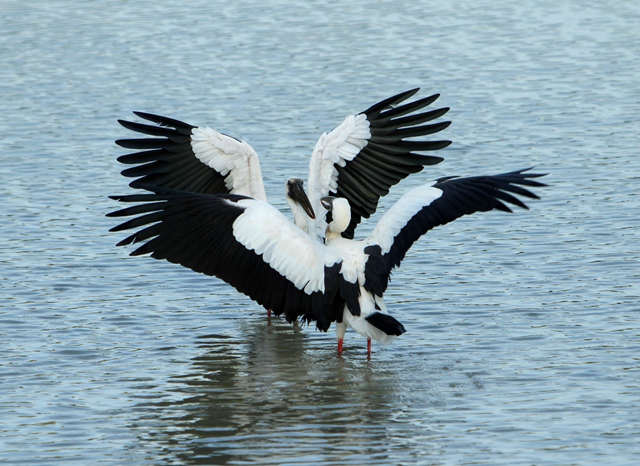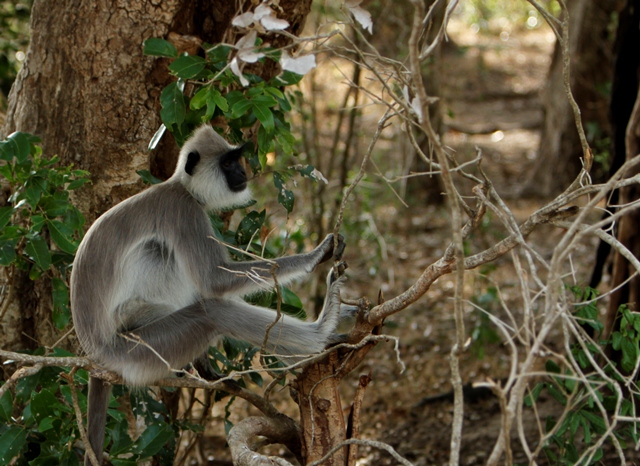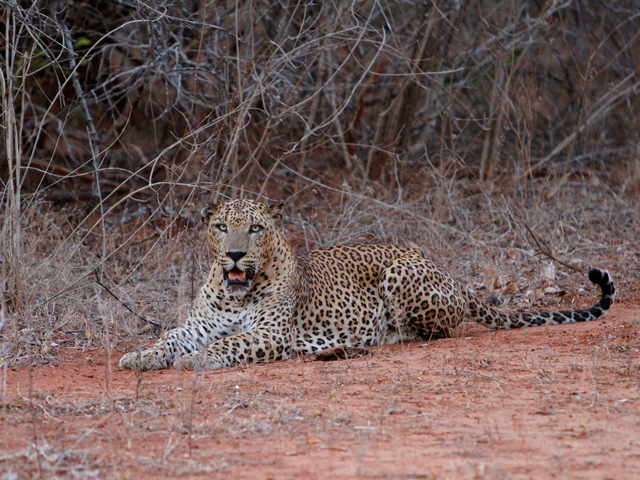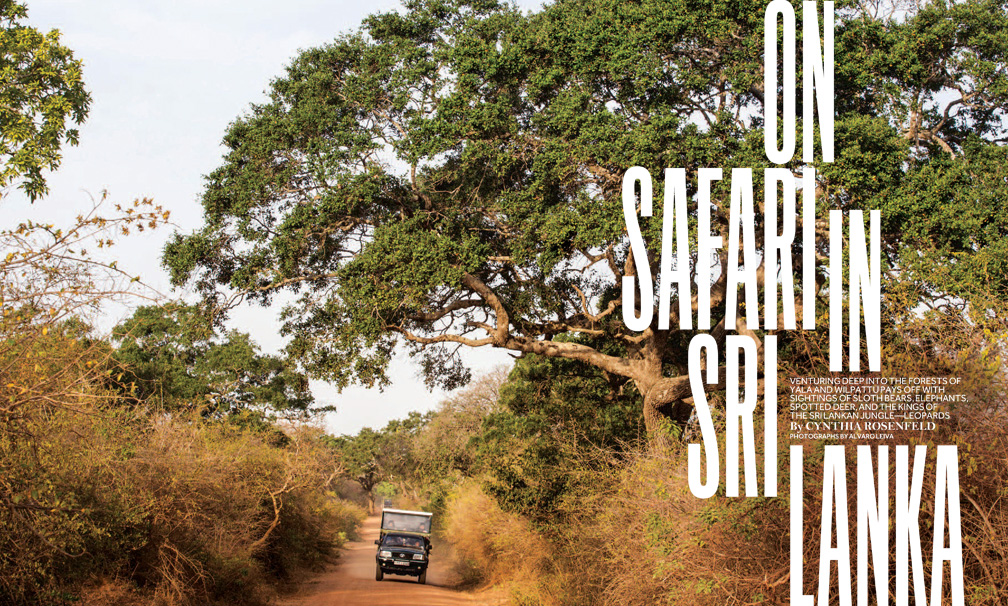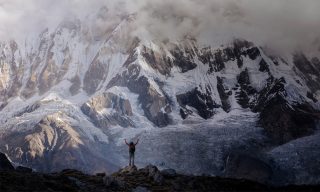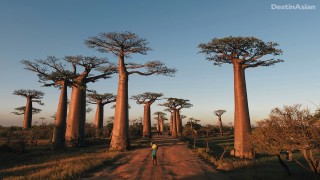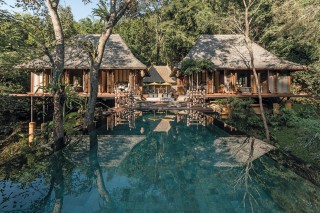The 5 a.m. wake-up call comes all too soon, and half an hour later the breeze is whipping through my hair as we cruise once more into Wilpattu. Noel pulls out a map and explains that we will drive 55 kilometers across the park to start at Kudiramalai Point, on Wilpattu’s westernmost perimeter, where we’re unlikely to be bothered by any other vehicles.
Before the sun comes up, we’ve already seen two large sambar deer, as well as gray herons, water hens, more crocodiles, woodpeckers, an orange-breasted green pigeon, a white-bellied drongo, and two types of hornbill. But it’s a leopard that I’m keen to see, and by midmorning, we still haven’t found one.
Sensing my frustration, Noel pulls off the road and we breakfast on fresh fruit and croissants by a lily-filled lake. It’s an enchanting scene, and my mood improves with each bite. “When you spot a leopard,” Noel says, “and you will spot one, just tell me calmly, and don’t point, as this might scare him off.”
Bellies full, our fortunes seem to improve. Just before 10 a.m. we come upon a single bull elephant drinking from Thala Wila Lake, a broad expanse of water filled with pink flowers that Noel calls “horsefly’s eyes.” The elephant has managed to cover himself in wet blossoms from trunk to wrinkly backside. Delighted, I scribble in my notebook: “Today I am seeing pink elephants.”
Soon after, I do exactly what I was told not to do and call out “There, I see a leopard!” with my arm snapping out uncontrollably in the animal’s direction. It’s a quick sighting—the big cat dashes across the path in front of us and disappears into the undergrowth. But I’ve officially seen my first Wilpattu leopard, and after so many hours of looking for one, I feel an elation akin to opening a tableful of birthday presents.
Our picnic lunch unfolds on the bank of a slow-moving river. After devouring a heaping plate of kottu roti washed down with an ice-cold Lion beer, I scribble in my notebook about “my” leopard like a teenage girl with her first crush. Yet it’s not the only cat we see that day. Toward the end of the afternoon, we’re all watching quietly as a muscular male peeks out from the bush and saunters back and forth along the path behind us for a good five minutes. He’s looking directly at us when a female darts by so fast that I only catch sight of her spotted tail. Our male follows her out of sight. “Definitely a mating pair,” Noel tells me as we linger alone in the afterglow of the encounter.
Soon we’re racing back across the ruddy landscape to reach the park gates before their 6:30 p.m. closing, all of us pleasantly ex-hausted from a full day in the bush. But Wilpattu grants me one more birthday gift, in the form of a large sloth bear. His Fluffiness scampers out on the plain ahead of us, where he rolls around on the grass before walking languidly back into the woods. Notebook now full, I settle into my seat for the ride back to camp.
THE DETAILS
Getting There
Colombo’s Bandaranaike International Airport is served by most major regional carriers.
Where to Stay
In the Sri Lankan capital between safari outings, check into Casa Colombo (231 Galle Rd.; 94-11/452-0130; doubles from US$250), a 200-year-old Moorish mansion that has been lovingly converted into a 12-suite hotel.
What to Do
Leopard Safaris (from US$400 per adult per night) runs regular camp excursions in Yala and Wilpattu year-round, hosting up to 15 people at a time. Its other two eco-friendly campsites—in Uda Walawe and the Knuckles Mountains—are available only on special request.
This article originally appeared in the October/November 2013 print issue of DestinAsian magazine (“On Safari in Sri Lanka”).

